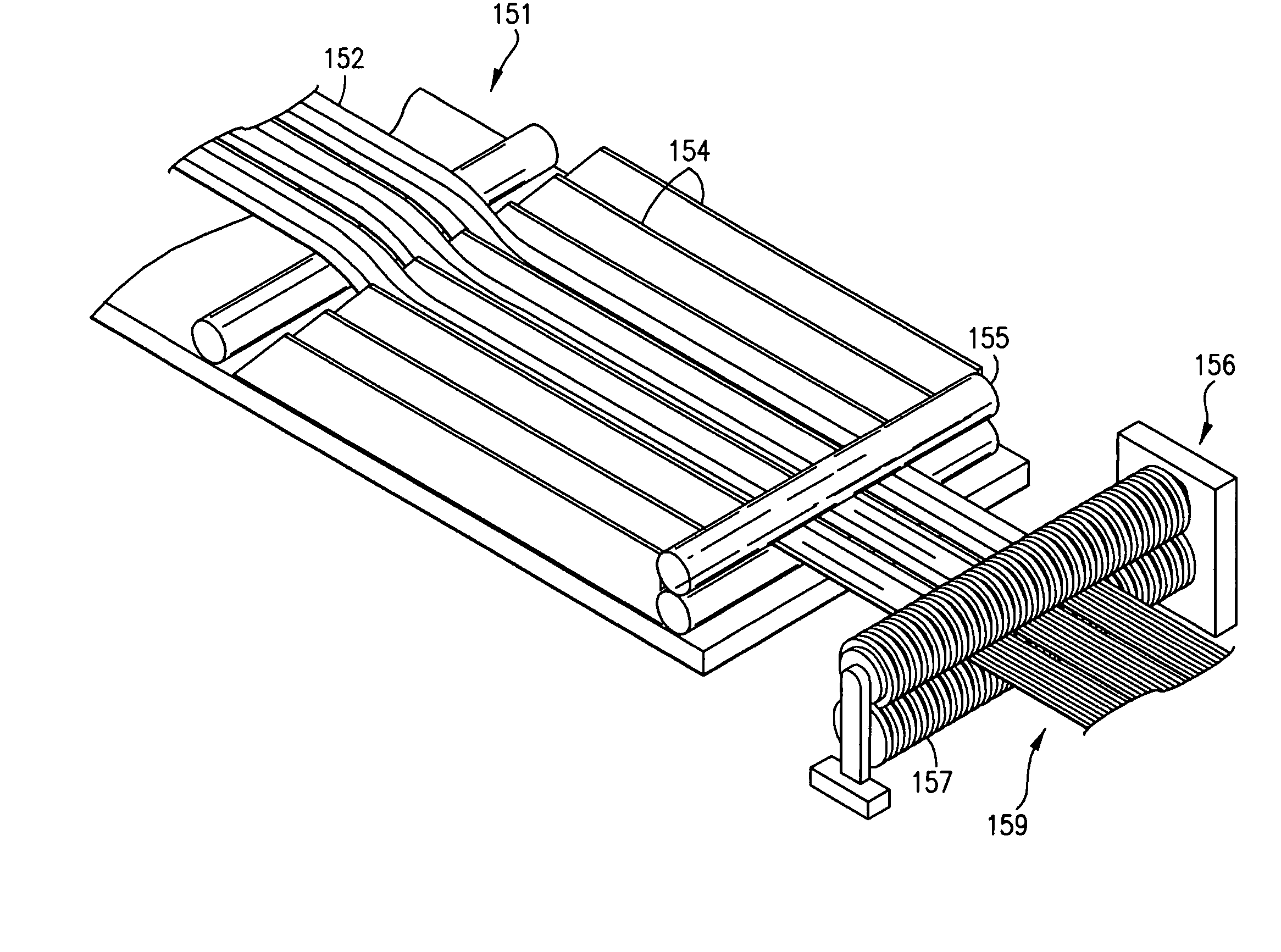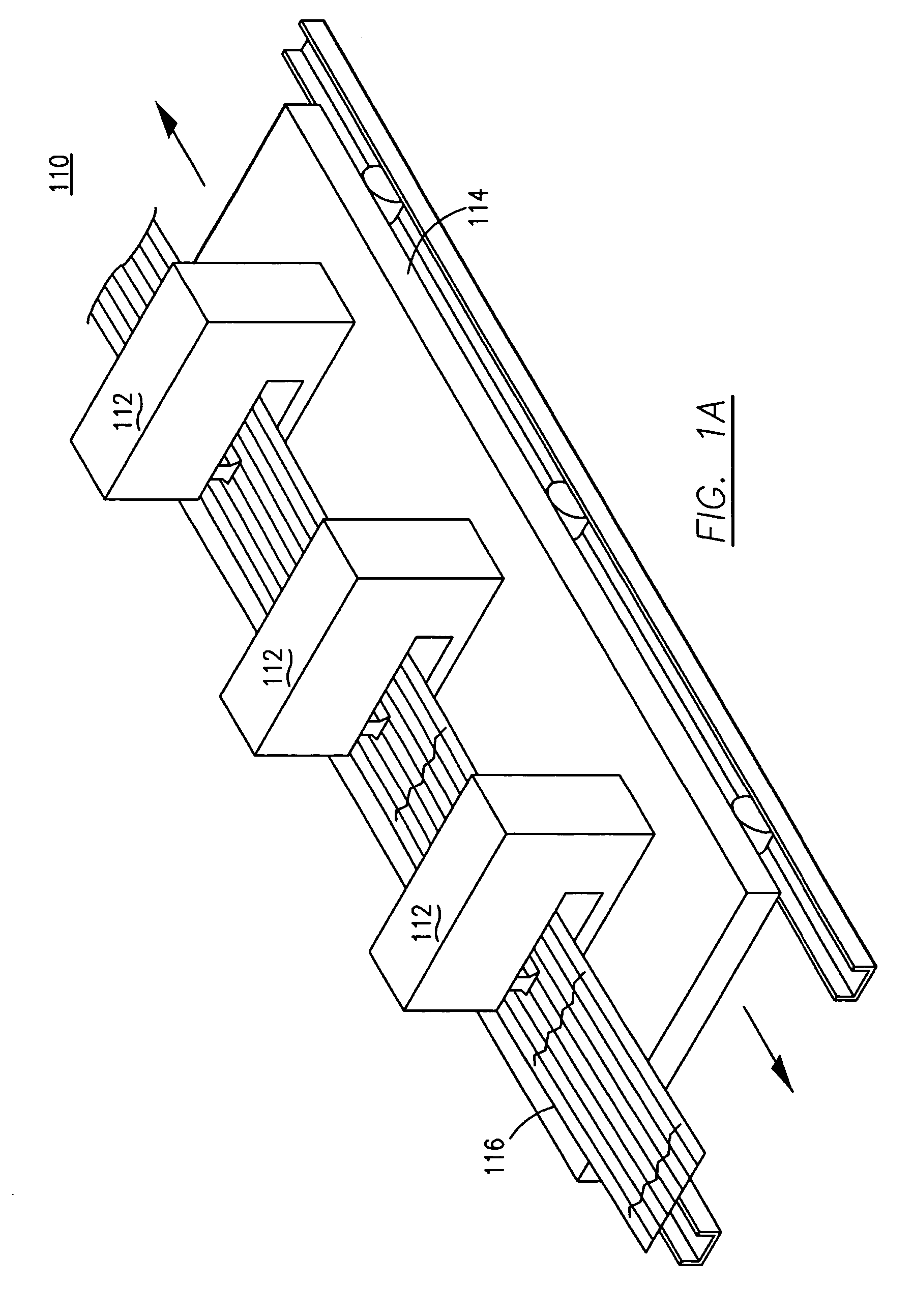Reinforced composites and system and method for making same
a composite material and reinforcement technology, applied in the field of composite materials, can solve the problems of insufficient trees to satisfy, need for regular maintenance and preventive treatment, and metal products cost substantially more than wood ones, and achieve the effect of facilitating smooth and rapid feeding
- Summary
- Abstract
- Description
- Claims
- Application Information
AI Technical Summary
Benefits of technology
Problems solved by technology
Method used
Image
Examples
Embodiment Construction
[0042] A presently preferred embodiment according to my invention includes a method and apparatus for pultrusion of a plastic member having a bamboo-reinforced core. The apparatus includes an input and series of die assemblies for taking bamboo tape and embedding it in an appropriately shaped composite member. A pultrusion and saw assembly maintain production at an efficient and desired rate for the particular shape(s) and type of end product being produced. Alternative embodiments are also shown for the processing of bamboo into tape and ribbon forms usable by a pultrusion machine.
[0043] The process for making a reinforced bamboo product starts with the manufacture of an appropriately shaped bamboo insert. For most applications it is preferable to use a tape or ribbon dispensed from a coil, as a coil-fed mechanism facilitates a smooth and rapid feeding of relatively uniform strips of bamboo into the die assembly for making a core. Thus, the process for making plastic lumber typica...
PUM
| Property | Measurement | Unit |
|---|---|---|
| Fraction | aaaaa | aaaaa |
| Length | aaaaa | aaaaa |
| Thickness | aaaaa | aaaaa |
Abstract
Description
Claims
Application Information
 Login to View More
Login to View More - R&D
- Intellectual Property
- Life Sciences
- Materials
- Tech Scout
- Unparalleled Data Quality
- Higher Quality Content
- 60% Fewer Hallucinations
Browse by: Latest US Patents, China's latest patents, Technical Efficacy Thesaurus, Application Domain, Technology Topic, Popular Technical Reports.
© 2025 PatSnap. All rights reserved.Legal|Privacy policy|Modern Slavery Act Transparency Statement|Sitemap|About US| Contact US: help@patsnap.com



